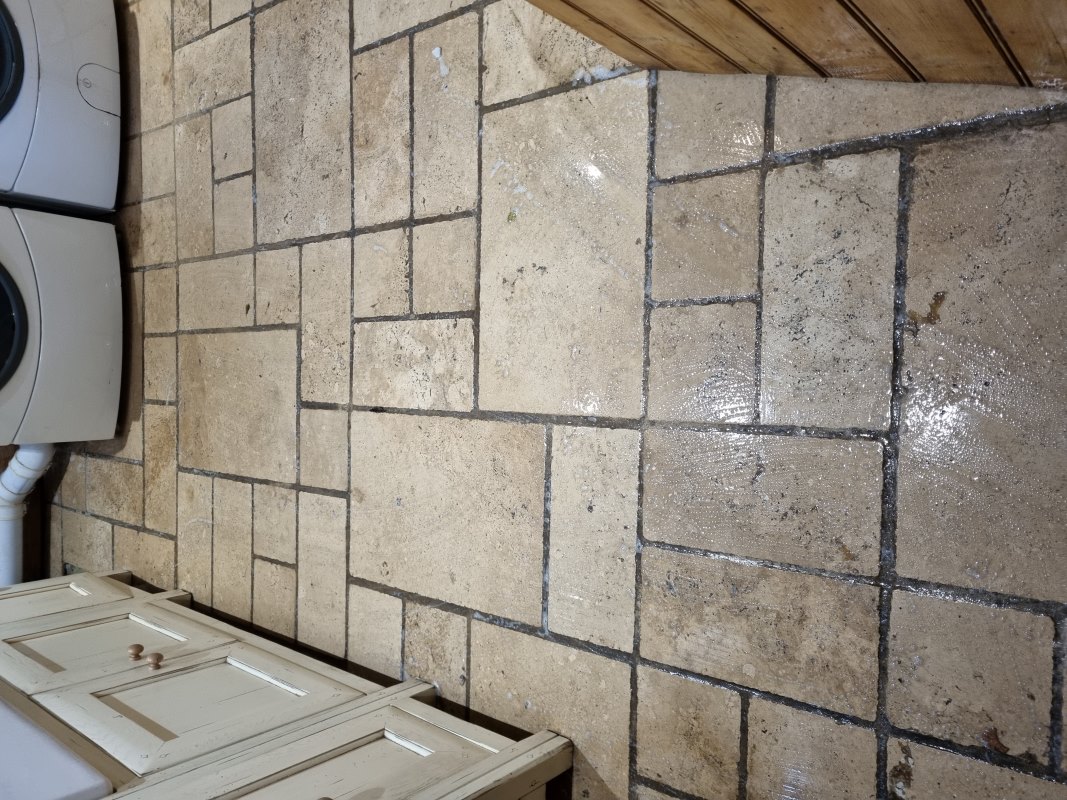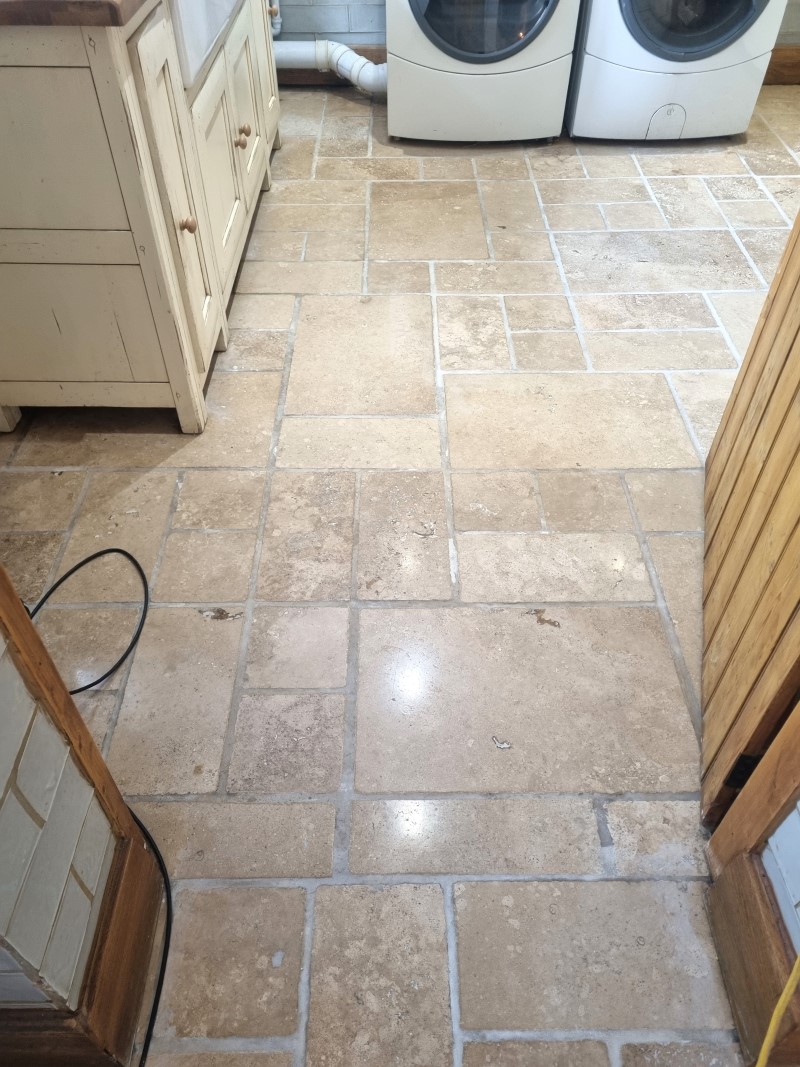This Travertine tiles in the Utility room of this property in Neston on the Wirral Peninsula had become filthy with ingrained dirt. Any sealer that was once present on the stone or grout has long since worn off and the grout especially had darkened with ground in dirt.

This is a common problem with stone floors as the sealer ensures dirt remains on the surface where it is easily cleaned away. Sealers however wear down with use and so they do need replacing every three to five years depending on use. This happens gradually over time and tends to go un-noticed until eventually you realise it no longer looks like it should.
To renovate the floor, I quoted for deep cleaning the stone and grout, strip off what was left of the old sealer, polish the stone and then re-seal to ensure easy maintenance in the future. Some of the Travertine tile also had small pitts that were dirt magnets so I offered to fill these in with a specialist stone filler as part of the work.
Happy with the price and relieved to have found someone who could renovate the floor a date was set for they work to start.
Deep Cleaning Travertine Tile and Grout
The best way to restore the appearance of honed stone is the application of diamond encrusted burnishing pads which come is a set of four pads with different grits. Work starts with the coarse 400-grit pad which is fitted to a rotary floor machine and run over each tile several times using only water for lubrication. This coarse pad cuts through the stone to remove dirt, old sealer, marks and fine scratches. The water turns into a dark slurry and this is rinsed off and extracted with a wet vacuum.
Pads can struggle to reach into the recesses of the grout line so the next step was to hand clean the grout using Tile Doctor Pro-Clean, scrubbed in with a stiff brush. Pro-Clean is a strong alkaline tile and grout cleaning product which is safe to use on all types of tile and grout. The soiling was then rinsed and extracted as before with the wet vacuum.
Next step was to fill in the small holes in the Travertine with a specialist stone filler which is colour matched to the stone. Once done its very difficult to detect and will prevent dirt from becoming lodged.
Once the filler had set work continued with the burnishing of the floor using the 800 and 1500-grit pads using the same process as before with water. These pads bring up the appearance of the stone building up a lovely finish. The floor was then left to dry out overnight.
Sealing Travertine Tiles
I returned the next morning and set about applying the last pad which is a very fine 3000-grit polishing pad. This last pad is applied dry with only a little water sprayed onto the Travertine; this is a process we call a “Spray Burnish”.
Last step was to seal the floor with an impregnating sealer that works by occupying the pores in the stone thereby preventing dirt from residing there and ensuring it remains on the surface where its easily cleaned away. The client loved the light appearance of the natural stone so Tile Doctor Ultra-Seal was applied which provides invisible protection and doesn’t darken the stone.

One the sealer had dried I gave the floor a quick buff with a White Pad and once complete the floor looked so much cleaner and lighter; the grout in particular was transformed by the treatment. For aftercare cleaning I recommended the use of Tile Doctor Stone Soap which will help maintain the patina on the stone.
Source: Grout Cleaning and Renovation in Neston on the Wirral
Tile Doctor is the only Tile, Stone and Grout cleaning service in the UK on Trustpilot and with an enviable 4.9 out of 5 Star rating based on over 1,650 verified customer feedbacks, so you can rest assured you’re in good hands